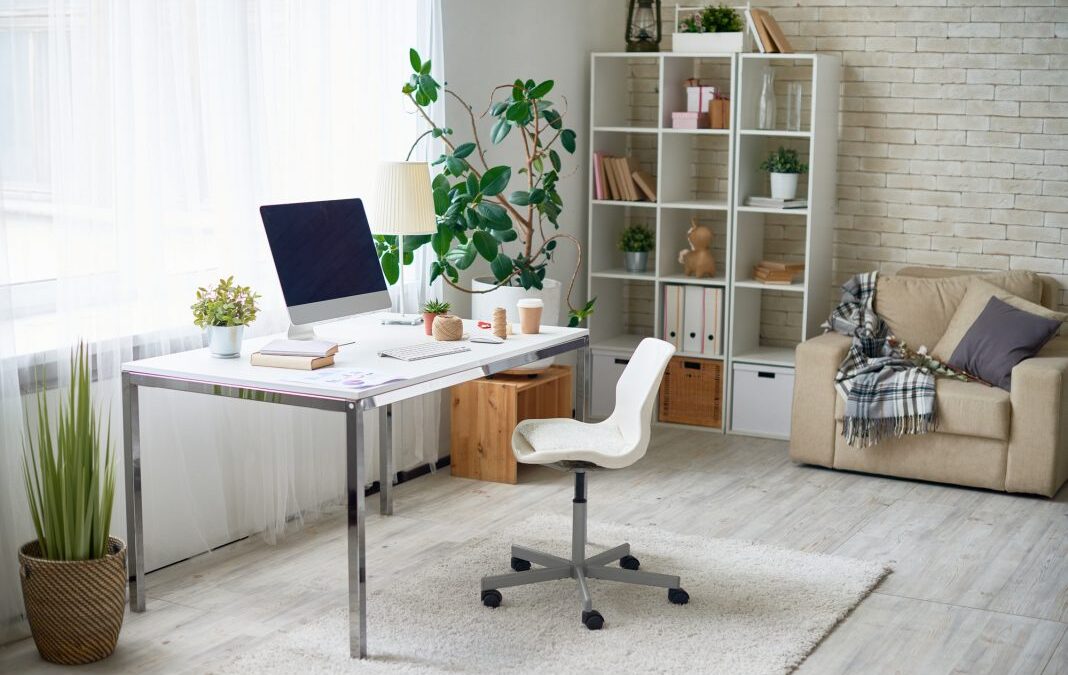Raise your hand if you work from home these days.
The numbers skyrocketed not so long ago, when employers shifted visitors from the website to remote work as a result of COVID-19. In fact, as video conferencing provider Zoom pointed out, more than 300 million participants choose their software for calls every day as part of the wave of work from home.
While it may be nice to go home, it’s also easier to feel overwhelmed or distracting once your personal life and work converge. We’ve created some tips to create a workplace without distraction in the home, so you can be as productive and competent as possible in your work.
Determine the method that works best for you
Each person has different work habits. And don’t assume that all home work is the same.
While one person can write code headlong all day, another can make frequent sales calls. These different approaches may require different types of space.
A person who is around the phone every day may need a place that shows well to the camera for interactive video; their schedules are often more separate, with frequent breaks as well as the need to decompress between calls. A person who is usually a completely independent contributor may need to find himself in deep reflection mode and may need a very quiet space with few distractions.
Whatever your work day, look at the times when you feel most productive. Next, determine how you can maximize that feeling when you will be employed at home.
Set regular working hours
Time can be a quick waste in your own home.
There is always something that catches your eye when you are at home. If you walk to a kitchen for a glass of water, maybe some dishes that need to come out of the dishwasher. Then you might need to throw your towel in the laundry. Then you’ll see that the washer is full – and, well, it could easily become a “If you give a cookie to a mouse”.
When you work from home, set the hours you will be spent working. Contact those who have your roommates, to make sure they know when you won’t be disturbed.
Put a lock in the door of your ‘office’
A lock on the door is capable of doing wonders up to keep other members of your family or roommates (we’re joking – sort of). However, in addition, this can be an excellent psychological trick.
When you hear your lock snapping, you switch to working mode. Even if you work inside your room, it turns into an office during the time the door is locked.
Creating a physical separation
In modern homes, a receptive floor plan could be ideal for family gatherings or give an airy opening impression. However, if you have more than one person working from home, your home or open-plan apartment will make it difficult to find decent workspaces.
To get around this, do what it is possible to do create a physical separation. It’s usually as basic as running your desk or adding a white noise machine. At the same time, it can be as radical as converting an extra room or closet into a private workplace or developing a “guest room” office inside your yard.
According to Mortgage Professional magazine, buyers should even start looking for larger homes to provide a little more space for work efforts. Moving to a Alternative home may seem like an extreme choice, but it may also seem sensible if your company seems willing to offer the remote as a long-term option.
Move some things to storage to give you extra space
Desperate times require desperate measures. If you’re having trouble finding a good workspace in your own home, ask yourself if temporary adjustments to your furniture or storage spaces could provide you with the room you want.
A large closet or pantry, when emptied and packed, is usually a great place for any small office. A guest room can be quite difficult with an office installed next to ordinary furniture, but replacing your larger guest bed with a bed or bed retractable could give you the space to distribute your materials and work efficiently.
Packing and storing items outdoors may seem like a time-needing solution; However, it is certainly easier and more affordable to store a number of things instead of trying to find a brand new home to find the space you will need to work.
Look for sunlight
You don’t want to tire your eyes by looking directly into a computer for hours and under intense ceiling lighting. If you can, place Your workplace in a place where it is possible to enjoy an abundance of natural light. However, you must also balance your desire for sunlight with your desire for peace and tranquility.
If your most illuminated areas can also be frequently crossed by roommates, you may need to close between these places and also a more private area.
Choose your workspace based on what you need to do. If you check your emails, for example, you might be able to do so in a more open space; digging directly into one project, in another hand, may need a quieter and much more closed area.
And daylight can also come from outside. If you’re not too distracted, it’s usually a good switch from working outside in your yard, on your own porch or perhaps from a local park.
Working from home is usually very effective and rewarding or very distracting and frustrating. If you fight to make it work, keep in mind much of your work at home success boils down to a wait.
If you expect to be distracted, you will likely find strategies to delay and delay Work. In your traditional office, you’re probably faced with even more distractions – meetings, discussions with colleagues and more – and you make it work. You can do it at home and be very successful; settling in a good workspace and a good pace is only your first step.











